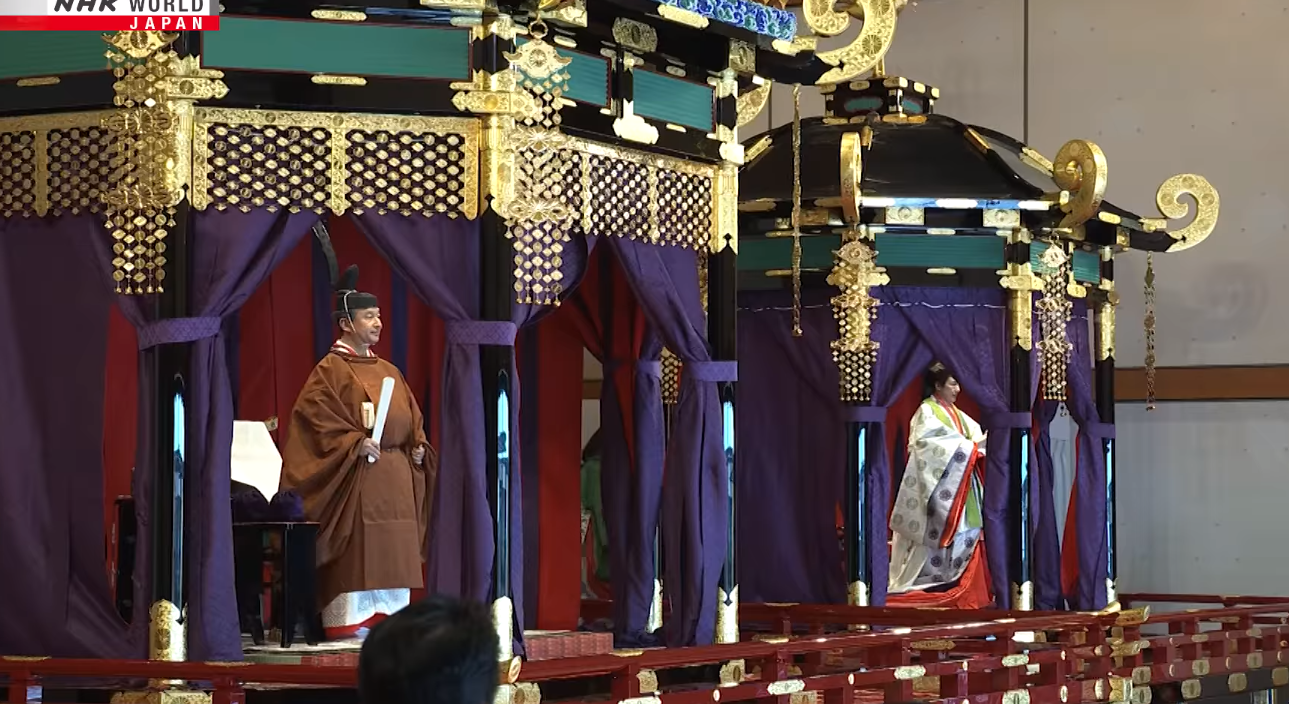
Emperor Naruhito has formally proclaimed his ascension to the throne via the ancient ceremony Sokui no Rei or the Ceremony of Accession.
While the Emperor Naruhito actually began his reign in May following the abdication of his father, then-Emperor Akihito, his ascension to the throne has now been formalized by the ceremony, which included a series of traditional rituals inside the imperial palace in Tokyo, Japan.
The ceremony was held as the country recovered from the aftermath of Typhoon Hagibis, which left almost 80 people dead. Out of respect for the victims and their families, the emperor postponed a celebration parade.
During the Sokui no Rei, Emperor Naruhito stood inside the 6.5m-high Takamikura throne and read out a formal proclamation, dressed in a yellow-orange robe worn only by emperors on special occasions. The translated proclamation says: "I swear that I will act according to the constitution and fulfill my responsibility as the symbol of the state and of the unity of the people."
Meanwhile, the emperor's wife Empress Masako, was reportedly dressed in 12 layers of robes, and stood in a separate smaller throne.
A congratulatory address was delivered by Japan's Prime Minister Shinzo Abe, which was followed by shouts of "Banzai!" which translates to "long live the emperor".
The ceremony was attended by hundreds of foreign dignitaries, including Prince Charles of Great Britain. A tea party was later hosted by the emperor while Prime Minister Abe hosted a banquet in the evening.
Ken Ruoff, author of Japan's Imperial House in the Postwar Era, pointed out: "The world just assumed that that [on 1 May] was the combined celebration, but the real celebration is what's happening now. It's not perceived as a big deal [to] the rest of the world who are like 'didn't we already do this?' But it's a big deal for the Japanese."






